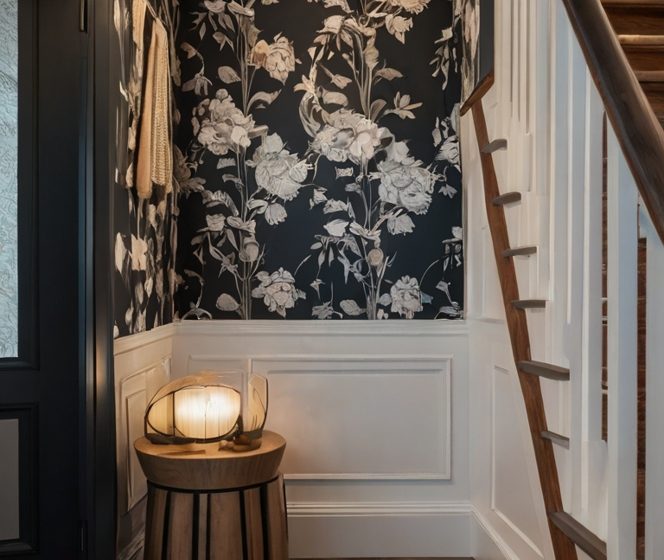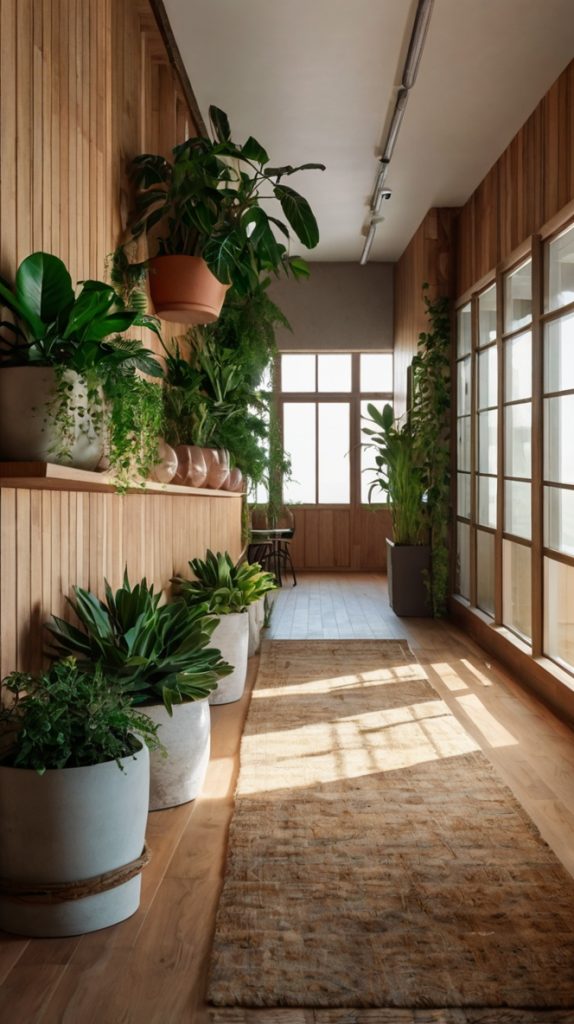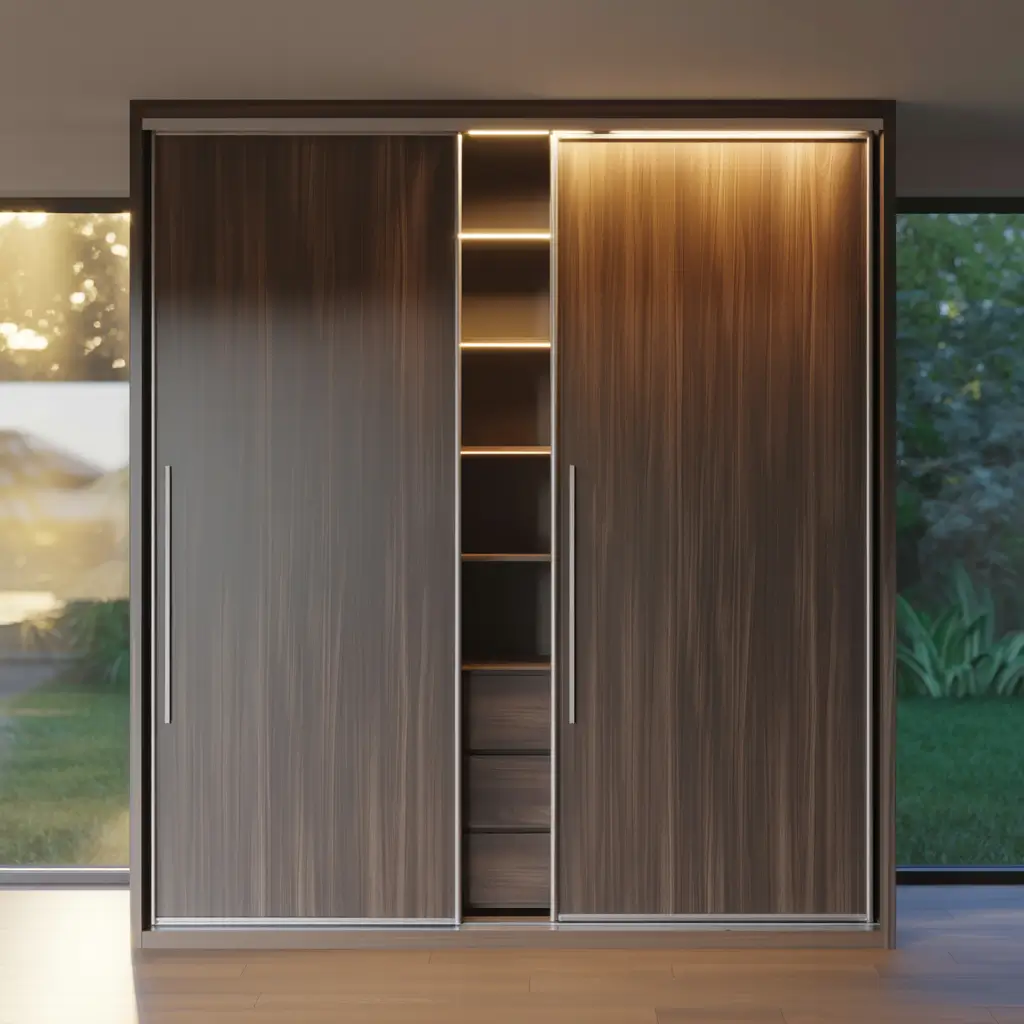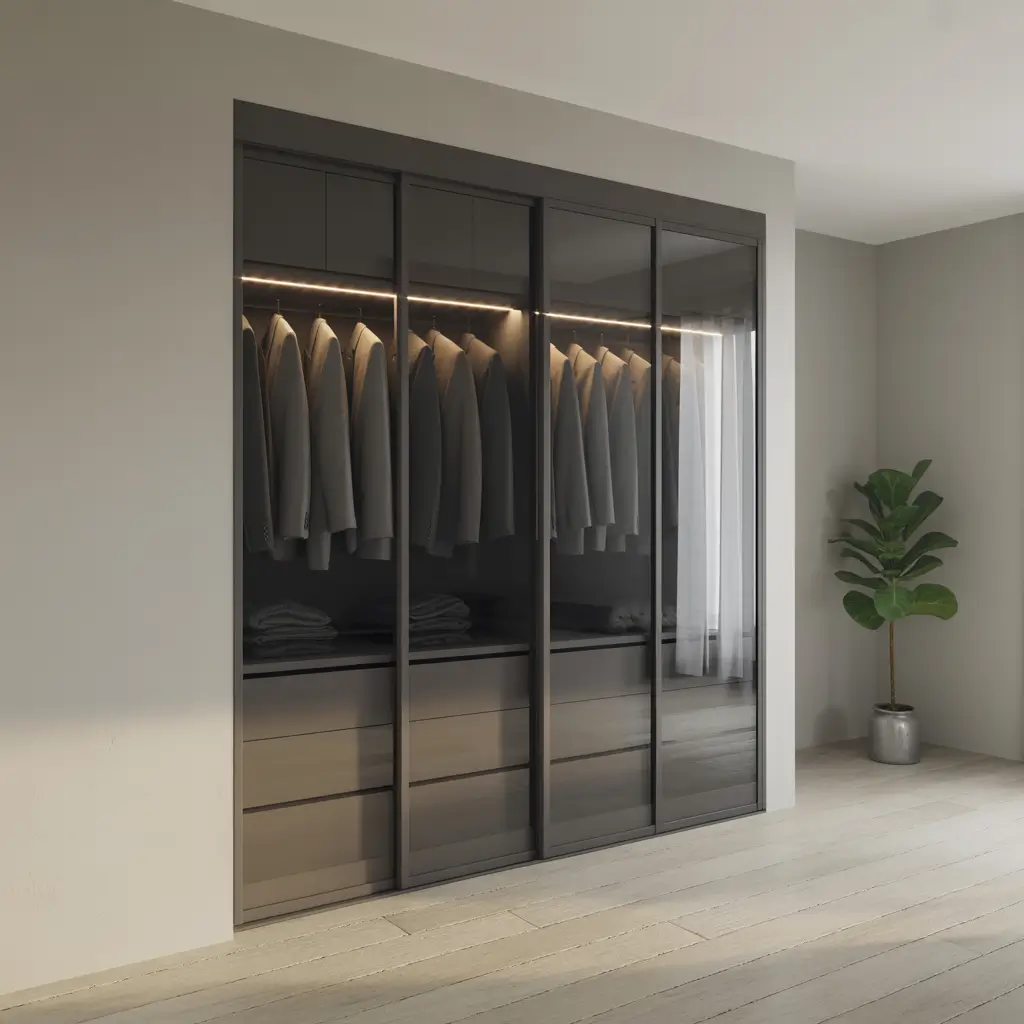15 Creative Upstairs Hallway Ideas to Inspire Your Decor

You know that awkward stretch of space upstairs that you walk through fifty times a day but never really see? Yeah, that hallway. The one you’ve been meaning to do something with since, oh, roughly 2019? Well, grab your coffee (or wine, I don’t judge), because we’re about to turn that boring corridor into something you’ll actually want to show off on Instagram.
I spent years treating my upstairs hallway like it didn’t exist. It was just there – a pathway from point A to point B, holding nothing but beige walls and that one family photo from 2015 I kept meaning to replace. Then one day, I realized I was wasting prime real estate. Why should downstairs get all the design love?
Cozy Reading Nook Hallway

Remember when you bought that house and thought, “I’ll read more”? Well, here’s your chance to actually make it happen. Creating a reading nook in your upstairs hallway transforms dead space into your new favorite spot.
I turned a wider section of my hallway into a mini library last year, and honestly? Game changer. You need three things to make this work:
- A comfortable chair (vintage works brilliantly here)
- Good lighting (we’ll talk more about this later)
- Built-in or floating shelves for your books
The trick is finding that sweet spot where the hallway naturally widens – maybe near a window or at the end of the corridor. I squeezed in a narrow bookshelf and an accent chair I found at a thrift store for $40. Add a small side table for your coffee, and boom – you’ve got yourself a legitimate reading space.
Making It Work in Tight Spaces
Don’t have much width to work with? No problem. Wall-mounted shelves above a slim bench create the same vibe without blocking traffic flow. Think vertical, not horizontal. I’ve seen people use those picture ledges from IKEA as book displays, and it looks fantastic while taking up exactly zero floor space.
Gallery Wall Showcase

Ever notice how museums make you walk through long hallways filled with art? There’s a reason for that – it works. Your upstairs hallway begs for a gallery wall, and I’m here to tell you it’s easier than you think.
Start with what you’ve got. Mix family photos with random art prints you love. The key is creating visual cohesion through either matching frames or a consistent color palette – not both, because that’s boring. I went with all black frames in different sizes, and threw in everything from my kid’s drawings to vintage postcards from our travels.
The Layout Game Plan
Here’s my foolproof method: cut paper templates of your frames and tape them to the wall first. Move them around until it looks right. Trust me, this saves you from the seventeen nail holes I made before figuring this out. Start with your largest piece slightly off-center, then build around it.
Pro tip: Keep the center of your gallery at eye level (roughly 57-60 inches from the floor). Unless you’re really tall or really short – then adjust accordingly because it’s your house, not a museum.
Minimalist White Hallway

Sometimes less really is more. After years of Pinterest-induced maximalism, I’m finally understanding the appeal of a clean, white hallway. It makes the space feel twice as big and gives your eyes a rest between bedrooms.
But here’s the thing about all-white spaces – they need texture to avoid looking like a hospital corridor. Think white shiplap, board and batten, or even just different paint finishes. I used flat white on the walls and semi-gloss on the trim, and that subtle difference adds just enough visual interest.
Adding Warmth Without Color
White doesn’t mean sterile. Natural wood elements warm things up instantly:
- Oak picture frames
- A jute runner
- Woven baskets for storage
The minimalist approach works especially well if your bedrooms are full of color and pattern. Your hallway becomes this calm transition space that doesn’t compete for attention.
Also Read: 15 Amazing School Hallway Ideas and Creative Student Displays
Floating Shelf Display

Floating shelves might be the best thing to happen to hallways since, well, ever. They add storage and display space without eating into your walking area. Plus, they’re ridiculously affordable if you DIY them.
I installed a row of floating shelves along one wall, styling them with a mix of practical and pretty. Bottom shelf? Baskets for random stuff that migrates upstairs. Middle shelf? Small plants and picture frames. Top shelf? Books and decorative objects I don’t want the kids touching.
Styling Your Shelves Like a Pro
The rule of thirds applies here. Group items in odd numbers, vary heights, and leave some breathing room. Nobody wants to look at cluttered shelves first thing in the morning. Mix horizontal and vertical elements – stack some books horizontally, stand others up, lean a small piece of art against the wall.
Runner Rug with Pattern

Can we talk about how a good runner transforms a hallway? It’s like the difference between wearing sweatpants and putting on real clothes – suddenly everything looks intentional.
A patterned runner hides dirt (hello, high-traffic area) while adding major personality. I went with a vintage-style Persian runner because I’m basic like that, but geometric patterns, stripes, or even a bold floral work just as well.
Choosing the Right Size
Measure twice, buy once. Your runner should leave about 4-6 inches of floor visible on each side. Length-wise, it should run most of the hallway length but doesn’t need to reach wall to wall. Mine stops about a foot from each end, and it looks perfect.
FYI, if you have hardwood floors, invest in a good rug pad. Nothing ruins the vibe faster than a runner that slides around every time someone walks on it.
Statement Lighting Fixtures

Hallway lighting usually sucks. There, I said it. Those builder-grade boob lights? They’ve got to go. Switching out boring fixtures for something with personality instantly elevates your hallway from afterthought to intentional design choice.
I replaced three basic flush mounts with semi-flush fixtures that have actual style. The difference? Night and day (pun intended). For narrow hallways, consider a row of pendants or even wall sconces if you’re feeling ambitious with electrical work.
Light Layering Strategies
Good hallway lighting needs layers:
- Ambient lighting (your main fixtures)
- Accent lighting (picture lights for artwork, LED strips under floating shelves)
- Task lighting (if you’ve got that reading nook)
Mix warm and cool bulbs strategically. Warm near seating areas, cooler near mirrors or artwork. It sounds complicated, but once you see the difference, you’ll never go back to one sad ceiling light.
Also Read: 15 Beautiful Hallway Lighting Ideas for Modern Interiors
Indoor Plant Accents

Plants make everything better. Scientific fact. Okay, maybe not scientific, but definitely true in my experience. Even the darkest hallway can support the right plants, and they add life to what’s often the most lifeless space in your house.
Start with low-light champions like pothos, snake plants, or ZZ plants. I’ve got a pothos trailing from a macrame hanger in my hallway, and that thing thrives on neglect. Perfect for those of us who forget to water things.
Creative Plant Placement
Think beyond floor plants:
- Wall-mounted planters save floor space
- Hanging planters add vertical interest
- Small plants on floating shelves create vignettes
- A tall fiddle leaf fig at the hallway’s end becomes a focal point
Accent Wall with Wallpaper

Wallpaper’s back, baby, and hallways are the perfect place to experiment. You’re not committing to a whole room, just one wall, so go wild. That bold pattern you love but seems too much for a bedroom? Perfect for the hallway.
I chose a subtle geometric pattern for my hallway’s end wall, and it creates this amazing focal point that draws your eye down the corridor. Removable wallpaper makes this even less scary – if you hate it in six months, peel it off.
Installation Without Tears
Real talk: hanging wallpaper solo is tough. Grab a friend, bribe them with pizza, and:
- Start with a laser level or plumb line
- Work from the center out
- Smooth as you go (a credit card works great)
- Overlap seams slightly for pattern matching
Modern Black Trim Hallway

Black trim might sound scary, but hear me out. It creates this incredible graphic quality that makes everything else pop. White walls with black trim, doors, and baseboards? Chef’s kiss.
I painted just the door frames black in my hallway as a test run, and now I’m planning to do all the trim. It’s sophisticated without being stuffy, modern without being cold. Plus, it hides scuff marks better than white trim ever could.
Making It Work
The key to black trim:
- Use a high-quality paint (cheap black paint looks gray)
- Semi-gloss or gloss finish reflects light and looks intentional
- Balance with plenty of white or light walls
- Add warmth through wood tones or brass hardware
Also Read: 15 Inspiring Long Hallway Decorating Ideas for Modern Homes
Storage Bench and Hooks

Functional can be beautiful, I promise. A storage bench with hooks above turns your hallway into a mini mudroom. Perfect for those random items that seem to live upstairs – sports equipment, backpacks, that jacket you wear twice a year.
I installed a simple wooden bench with cubbies underneath and a row of hooks above. Each kid gets their own hook (color-coded because I’m that mom), and the bench holds their sports bags. No more tripping over soccer cleats at 6 AM.
Maximizing Storage Style
Make it pretty with:
- Matching baskets in the cubbies
- Decorative hooks (not just basic hardware store ones)
- A cushion on top for comfort
- A mirror above the hooks for last-minute appearance checks
Frameless Mirror Gallery

Mirrors in hallways = genius. They reflect light, make the space feel bigger, and give you somewhere to check if you’ve got toothpaste on your shirt. A collection of frameless mirrors creates an artistic installation that’s also functional.
I collected vintage mirrors from estate sales and arranged them salon-style on one wall. The different shapes keep it interesting, while the lack of frames keeps it cohesive. Cost me less than one large statement mirror would have.
Arrangement Tips
Start with your largest mirror as an anchor, then build out:
- Mix shapes (round, rectangular, sunburst)
- Vary sizes dramatically for visual interest
- Keep spacing relatively consistent
- Use museum putty for extra security (kids + mirrors = anxiety)
Soft Pastel Color Scheme

Who says hallways need to be neutral? Soft pastels create a calming, sophisticated vibe that works especially well upstairs where you want things peaceful. Think blush pink, sage green, or pale blue – colors that whisper instead of shout.
I painted my hallway the palest pink (basically white with feelings), and it changes throughout the day with the light. Morning sun makes it peachy, evening light turns it lavender. It’s like having multiple hallways for the price of one paint job 🙂
Color Combinations That Work
Try these winning combos:
- Sage green walls + white trim + natural wood
- Pale blue walls + brass fixtures + navy accents
- Blush pink walls + black trim + gold mirrors
- Lavender walls + gray trim + silver fixtures
Floating Console Table

Sometimes you need a surface upstairs – somewhere to drop keys, display a vase, or hide that pile of library books you keep forgetting to return. A floating console table gives you function without bulk.
Mine sits right at the top of the stairs, catching all the random stuff that migrates upward. It’s narrow enough not to impede traffic but deep enough to be actually useful. I style it simply – a lamp, a small tray for odds and ends, and usually fresh flowers when I remember to buy them.
DIY vs. Buy
You can totally DIY this with:
- A nice piece of wood (live edge looks amazing)
- Heavy-duty floating shelf brackets
- Wall anchors (don’t skip these)
- Some wood stain or paint
Or buy one ready-made if DIY isn’t your jam. Either way, keep it narrow – 8-10 inches deep maximum.
Scandinavian Style Hallway

The Scandinavians know what they’re doing. Clean lines, natural materials, and a neutral palette create a hallway that feels expensive even on a budget. It’s minimalism with warmth, function with beauty.
My friend did her entire upstairs hallway Scandi-style, and I’m honestly jealous. White walls, light wood floors, simple black fixtures, and one perfect piece of art. That’s it. The restraint kills me, but it looks incredible.
Essential Scandi Elements
Nail the look with:
- Light wood tones (think birch or white oak)
- White or very pale gray walls
- Black metal accents sparingly
- Natural textiles (linen, wool, cotton)
- One statement piece (artwork or furniture)
- Plants (always plants)
Wall-Mounted Art Ledges

Picture ledges changed my life. Okay, that’s dramatic, but they seriously solved my commitment issues with wall decor. You can switch out artwork seasonally, monthly, or whenever you get bored without making new holes in the wall.
I installed three ledges at different heights, creating a dynamic display that I change whenever the mood strikes. Currently showing: a mix of family photos, my daughter’s art, and some prints I grabbed on Etsy. Last month? Completely different vibe with vintage botanical prints.
Styling Your Ledges
The secret sauce:
- Layer pieces (larger in back, smaller in front)
- Mix frames and unframed pieces
- Add small objects (tiny plants, decorative items)
- Leave some negative space
- Change it up regularly to keep it fresh
IMO, this is the best solution for renters or anyone who gets bored easily. Maximum impact, minimum commitment.
Bringing It All Together
Here’s the thing about hallway design – you don’t have to pick just one idea. Mix and match based on your space, style, and sanity level. Maybe you start with a runner and some art ledges, then add plants and better lighting down the road.
My hallway evolved over two years. Started with paint, added the gallery wall six months later, threw in the vintage runner when I found it at an estate sale, and just last week installed new lighting. Rome wasn’t built in a day, and neither is the perfect hallway.
The best part? Every single one of these ideas works whether you’re dealing with a grand corridor or a narrow passage that barely fits two people. Scale up or down based on your space. The point is to stop ignoring that hallway and start making it work for you.
Your upstairs hallway sees you at your worst (morning hair, anyone?) and your best. It deserves better than builder beige and that one sad ceiling light. Pick an idea, any idea, and start there. Trust me, once you see how much better it looks, you’ll wonder why you waited so long.
Now if you’ll excuse me, I need to go rearrange my picture ledges again. What can I say? It’s addicting.


